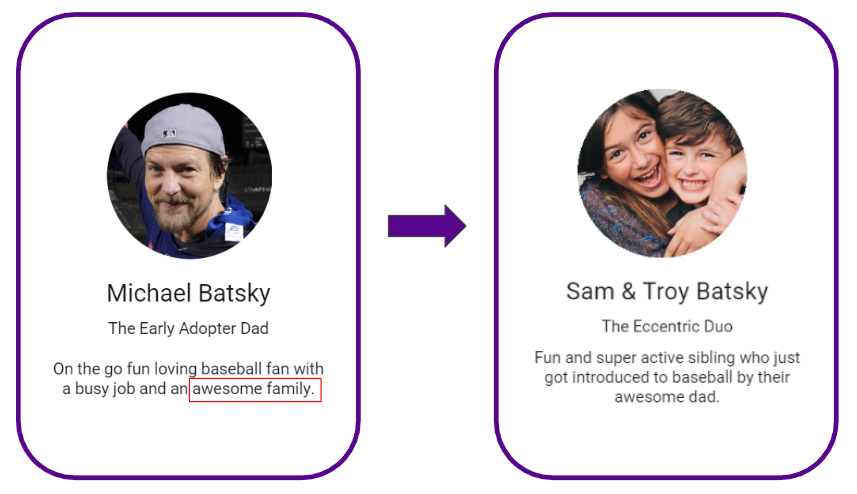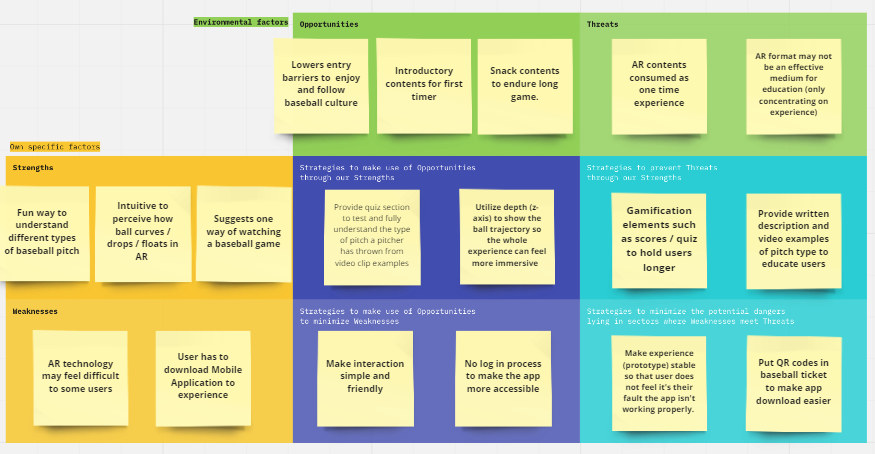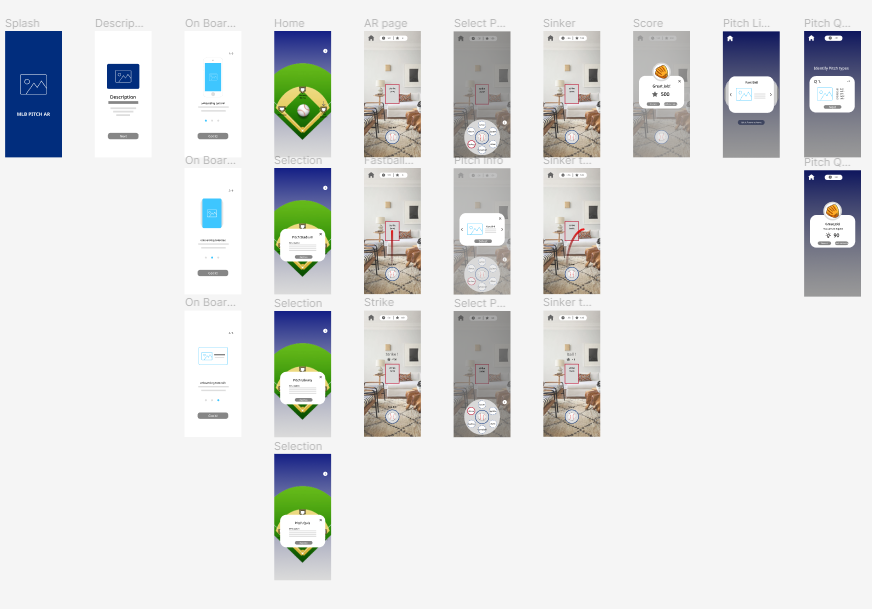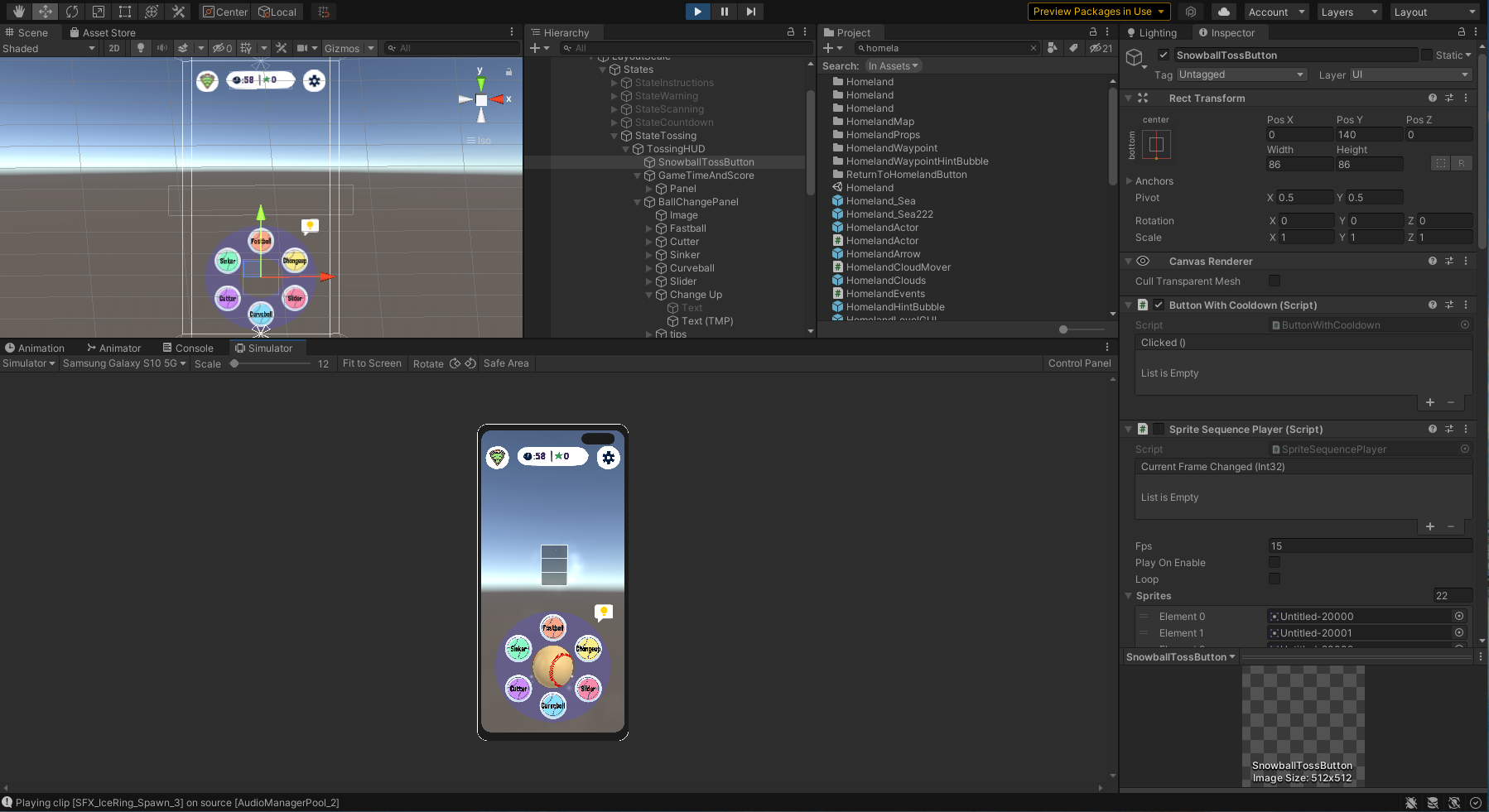MLB PitchAR : Learn to identify baseball pitch through AR experience
UX Design for MLB PitchAR, an educational baseball AR application for the younger generation of baseball fans
Client
Major League Baseball (MLB Advanced Media)
Deliverable
UX Design, Interaction Design in POC App
Role
UX Designer (AR)
The Ask : Create an immersive experience that can increase the excitement of baseball and evolve the future of sports engagement.
To create an immersive experience that would deepen fans' passion for baseball, I began by researching the context and identifying a specific problem to solve. The open-ended design brief allowed me to explore a wide range of possibilities utilizing XR technologies.
Understanding the Context : The graph presented here depicts a concerning decline in the number of baseball fans over the decades, with only 9% of Americans citing baseball as their favorite sport to watch, the lowest percentage since 1937.
Additionally, the table below highlights the increasing average age of viewers, although this does not necessarily indicate the complete absence of younger fans. However, according to a 2021 Washington Post poll, only 7% of those under the age of 30 identified baseball as their favorite sport.
To address this trend and promote growth in the sport, it is critical to draw in younger fans and expand the fan base.
Unstructured Interview : In addition, I conducted unstructured interviews with several individuals around me who were not baseball fans and asked for their thoughts on the sport. The responses I received highlighted several common complaints, including the perceived difficulty of understanding the game, the lengthy learning curve, and frustration with its slow pace and extended playtime.
The Problem : As baseball struggles to attract younger generations of fans, it is failing to experience significant growth. To address this issue, the product or solution must focus on drawing in younger fans and positioning baseball as a fun and accessible sport.
“I think the younger generation often gets discouraged to follow the sport because of its slow pace of play, not to mention the lengthy play time”
Problem Analysis : During the problem analysis, I observed that one of the major barriers to entry for baseball is the time and effort required to understand the game. While many consider baseball's subtleties and intricacies to be a core part of its appeal, it can be challenging for newcomers to fully appreciate the sport. Additionally, the length of a full game can require a significant investment of time from viewers.
Defining the Problem
The Ideation Process
Establishing a hypothesis :
Following the problem analysis, I formulated a hypothesis that
Introducing newcomers to the various pitch types in baseball can offer a fresh perspective on watching the game. By encouraging viewers to focus on each throw, this approach can make the game more engaging and potentially divert attention away from its extended playtime.
Understanding the design brief
The reasoning for the hypothesis :
The three accompanying graphs depict changes in the average duration of games, batted balls in play, and MLB strikeouts over the years. Notably, these graphs show that game durations have increased, while the number of batted balls in play has decreased and strikeouts have greatly increased.
Based on these observations, I surmised that the number of pitches thrown per game has likely increased over time. This means that fans are now spending more time watching pitchers throw different types of pitches.
By learning to identify the type of pitch being thrown, viewers can make the game more exciting, generating interesting questions such as whether the pitcher is throwing in the right location or whether the opposing team anticipates a certain pitch.
Why AR?
The reason I made the product in AR is 1) to incorporate AR to evolve the future of sports engagement, and 2) One of the challenges with the traditional broadcast perspective is that it can be difficult to perceive the actual trajectory of a thrown ball from a flat, two-dimensional viewpoint.
To address this limitation, I believed that AR was an ideal medium for demonstrating different types of ball pitches. By providing users with a sense of depth and immersion, AR technology enables viewers to better perceive and understand the various ball trajectories in a more engaging and intuitive way.
Proposing a Solution :
Hence, the solution I came up with is,
MLB PitchAR, a mobile AR application in which a user can learn to identify different types of baseball pitches through an immersive AR experience.
The Design Process
Setting the User Persona :
Although MLB initially provided an exemplary user persona, "Michael Batsky," a passionate early adopter dad, I adjusted the focus of the persona to better target younger generations of kids as users. Thus, I created a new persona centered around Michael Batsky and his awesome family.
Competitive Analysis :
I researched some media content that user is using to familiarize themselves with baseball, pitching to be exact.
There is MLB Home Run Derby game that provides an entertaining baseball experience to users on a mobile device, however, the app is more focused on the gaming experience so it is hard to acquire detailed information about baseball. Also, the experience specializes in batting experience. The Totally Baseball VR is a VR game that provides an immersive and entertaining experience of playing baseball, where a user can learn about baseball while playing it on a VR headset. However, the user has to own a VR headset to experience the game, and also needs to pay about $15 dollars to buy the game, so it has limited accessibility. While YouTube videos offer a simple and easy way to learn basic baseball rules, the user may perceive the information in a passive manner, lacking an immersive experience.
SWOT Analysis :
After conducting a SWOT analysis, I developed the following strategies to optimize our strengths, mitigate our weaknesses, seize opportunities, and mitigate potential threats:
Leverage our strength in creating an immersive experience by utilizing the z-axis to display ball trajectory.
Capitalize on the opportunity to increase accessibility by removing the login process.
Build on our strengths in engagement and retention by incorporating gamification elements such as score/quiz features.
Address the potential risk of low user adoption by including QR codes on baseball tickets to simplify app download.
User Flow : Then I created the user flow of the product and made a rough sketch of the prototype.
Lo-fi prototype : Then I made a lo-fi Figma prototype
Usability Testing & Iterations : Using various iterations of the prototype, I conducted usability testing through small group interviews and gathered feedback on interactions, tone, and visual resources. Through this process, I made meaningful changes to the design over multiple iterations.
Implementation with Unity & Niantic Lightship ARDK : In the development of the MLB PitchAR prototype, I utilized Unity and leveraged Niantic's Lightship ARDK to bring the immersive AR experience to life. While I worked with a developer friend to create different pitch-type modules, I personally built and designed the majority of the application using Niantic's AR voyage tutorial as a reference.
Final Result: MLB PitchAR was developed as an Android application, and you can see a demonstration of it in the video below. The MLB Advanced Media team was thrilled with the results, and I received some fantastic feedback.
It was an amazing opportunity to use AR technology in the sports engagement industry. Throughout the development process, I learned the importance of gathering feedback from users, especially considering that many people are not yet familiar with AR technology and may find it challenging. To successfully commercialize this technology and attract new baseball fans, making the app easy and accessible while listening to users' pain points is crucial in the XR design process.












